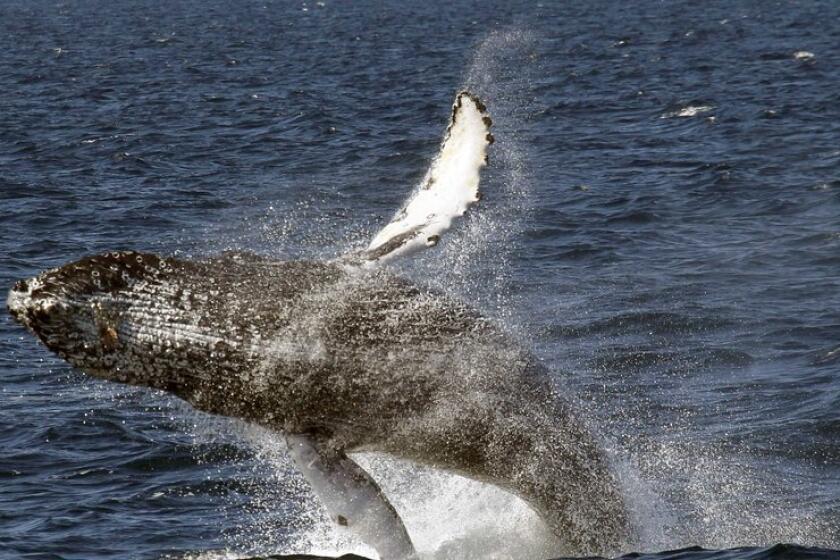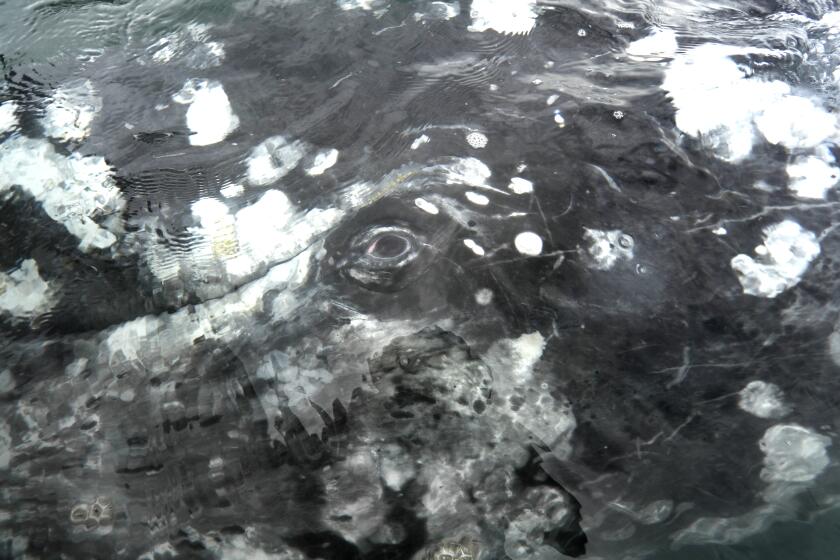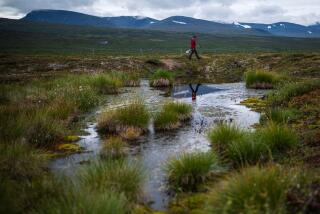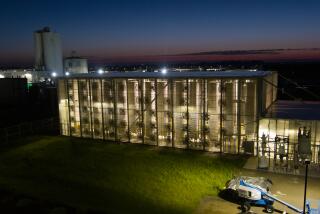Why helping whales to flourish can help fight climate change
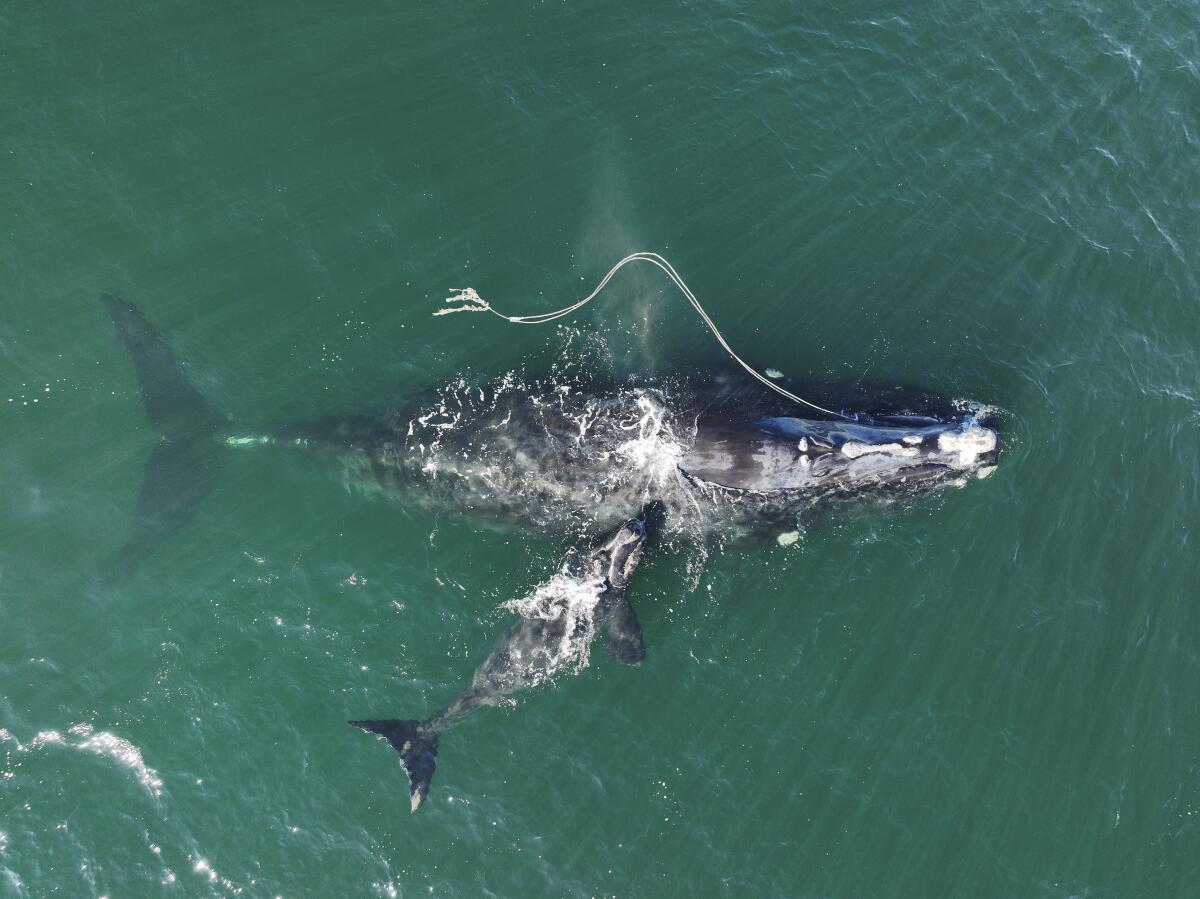
- Share via
The ocean is one of the planet’s great carbon sinks, absorbing nearly a third of the atmosphere’s greenhouse gas emissions.
Swimming in its depths are the great whales, a population whose sheer physical mass allows them to exert an outsized influence on the ecosystem around them. While researchers have long suspected that whales are key players in the ocean’s carbon cycle, quantifying exactly how these animals alter the seas — and what we lost with their decimation a century ago — has proved difficult.
Now a group of scientists has taken that challenge on. A team of ecologists, biologists and oceanographers recently published one of the most comprehensive efforts yet to understand just how much carbon the great whales absorb from the ocean, and the value that presents in the fight against climate change.
Whales are “large-bodied animals, they live for a long time, many of them migrate over vast distances,” said study leader Heidi Pearson, a marine biologist at the University of Alaska Southeast. “And so they have the potential to have these huge impacts on the ecosystem, including the carbon cycle.”
In their most direct impact, whale bodies hold an enormous amount of carbon that would otherwise be in the ocean or atmosphere.
Twelve great whale species — minkes, Antarctic minkes, sei, Bryde’s, blue, fin, bowhead, gray, humpback and three species of right whale — hold an estimated 2 million metric tons of carbon in their bodies, the authors found. That’s roughly equivalent to the amount of carbon released from burning 225 million gallons of gasoline.
Scientists solve a mystery and show the damaging domino effect of one dramatic shift in the marine ecosystem.
And that’s just the living members of the cetacean family. Another 62,000 metric tons of carbon — the equivalent of 7 million gallons of gas — is trapped every year in the form of whale falls, the bodies of dead whales that sink to the seafloor and support an ecosystem of scavengers.
“Whale falls are a very good way, in terms of efficiency, of taking carbon from the upper ocean and putting it in the deep sea for sequestration,” said Craig Smith, an oceanographer at University of Hawaii at Manoa who worked on the study.
When a whale dies in open water and sinks into the deep, a lifetime of accumulated carbon goes with it. It can take up to 1,000 years for water and elements at the bottom of the sea to cycle back up to the surface, which means that carbon is effectively sequestered for the better part of a millennium.
In addition, whales indirectly affect the ocean carbon cycle through a less majestic but critically important byproduct: their poop.
Whale poo is rich in fertilizing elements such as nitrogen, phosphorous and iron that are critical for phytoplankton growth. These nutrients are present in relatively small amounts in ocean surface waters.
But when whales defecate near the ocean surface, their waste fertilizes the growth of organisms at the base of the marine food chain, supercharging the growth of carbon-consuming life throughout the ecosystem. In the Southern Ocean alone, this process fixes an estimated 22 million metric tons of carbon in a web of living animals, the study authors calculated.
The research was published in December in the journal Trends in Ecology and Evolution.
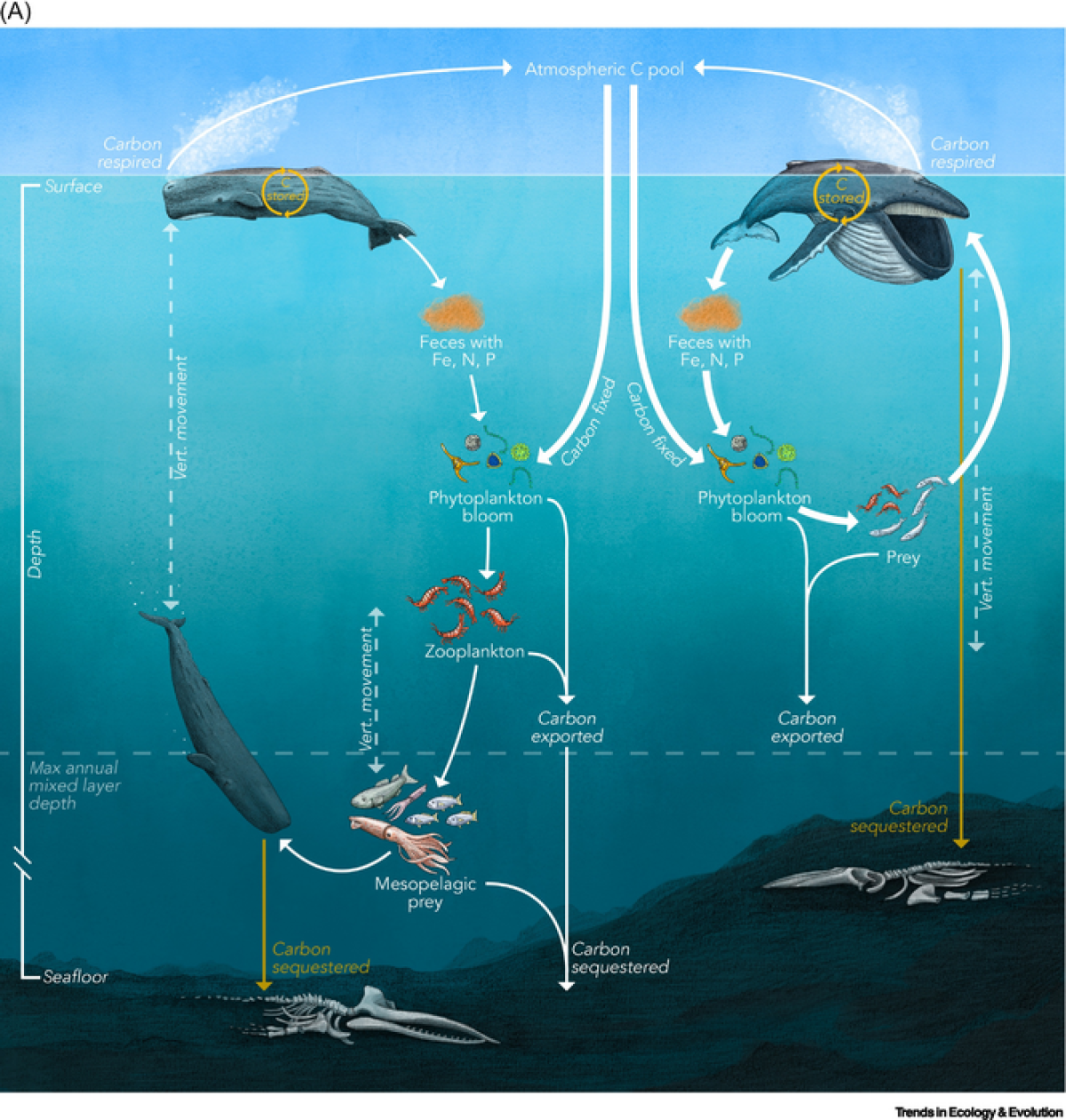
The paper is “an excellent synthesis of the progress that has been made in the past decade” on quantifying whales’ role in the carbon cycle, said Michael J. Moore, a senior scientist and veterinarian with the Woods Hole Oceanographic Institution who was not involved with the work.
It’s “a wonderful thought experiment with oceans of unknowns,” he said, many of which the authors acknowledge in the paper.
For one, the researchers weren’t able to quantify how much carbon whales breathe back into the atmosphere through respiration, Pearson said.
Whales are also quite literally a slippery population to measure, and the effect of whale waste in particular is difficult to pin down. What’s clear from their collective research, however, is that the more whales there are, the healthier the ocean is.
“Whale recovery,” the study authors conclude, “could be an effective ‘low-regret’ CDR [carbon dioxide removal] strategy with less risk, longer permanency and higher efficiency than geoengineering solutions.”
The number of gray whale calves born last year was the lowest since 1994, when scientists started recording the data, according to a report Friday.
Whale populations still haven’t recovered from the devastating effects of industrial whaling. Commercial hunting in the 19th and 20th centuries decreased the total mass of whales on the planet by 81%, according to the authors, ultimately releasing into the atmosphere 17 million metric tons of carbon that had previously been stored in the bodies of baleen whales.
Rebuilding whale populations alone isn’t enough to heal the seas. Global consumption of fossil fuels released 37.5 billion metric tons of carbon dioxide in 2022, the highest ever recorded in a single year. That’s more than 18,000 times the amount of carbon contained in all the great whales currently alive today.
Whales alone “are not going to solve climate change, but thinking about whales as playing a role in the carbon cycle can help motivate conservation,” said Andrew Pershing, a co-author of the study and director of climate science at the nonprofit Climate Central. “There are a lot of win-wins there, and I think that’s very true of a lot of natural climate solutions.”
